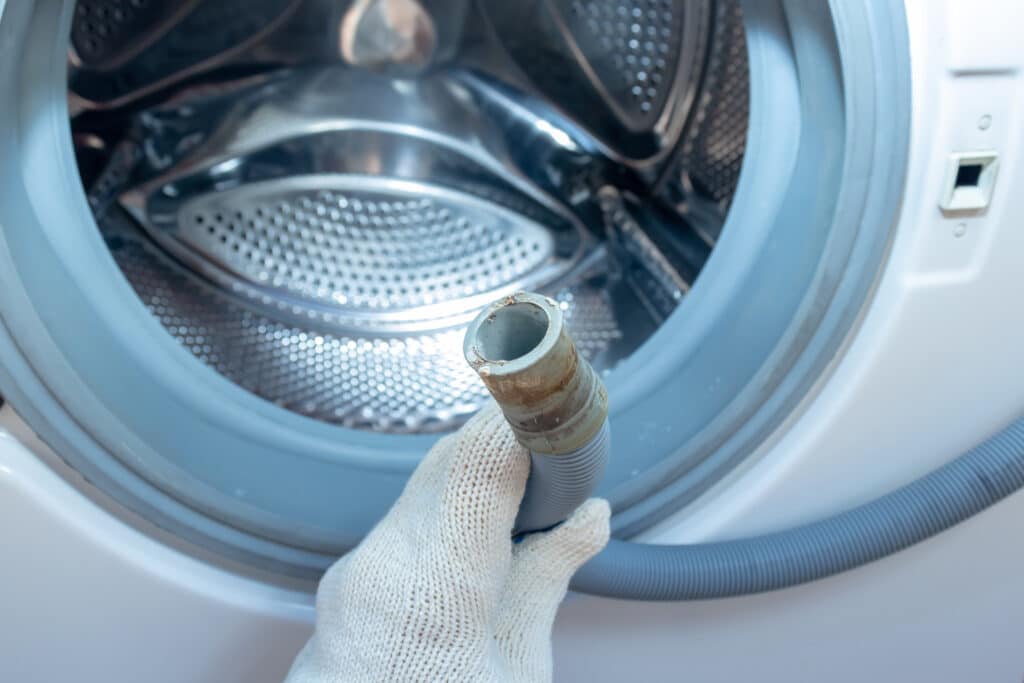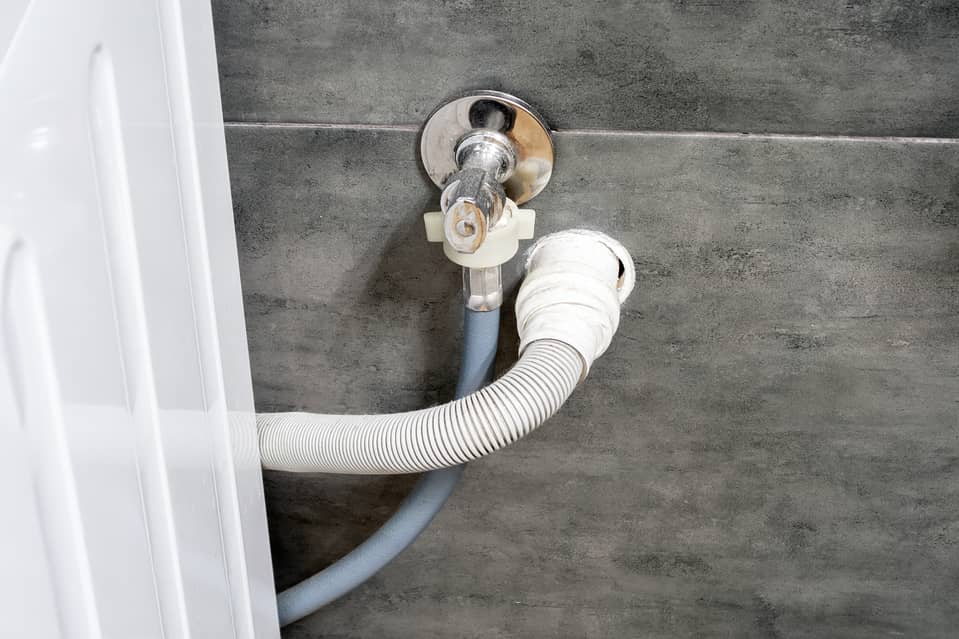Most homeowners love having a washing machine so they can do their laundry in their home. Trying to find the time to go to a laundry mat is difficult. If you have a washing machine, you want to maintain it and also make sure that you are venting the drain pipe. How to vent a washing machine drain pipe? You will need to install a vent pipe that is connected to the drain line and follow the steps.
Let’s take a look.

Why Vent a Washing Machine Drain Pipe?
A vent allows air to enter the drain pipe and balance the pressure within the plumbing system. Without a vent, negative pressure can build up in the drain pipe, which hampers the flow of water from the washing machine. Venting the drain pipe allows for smooth and efficient drainage, reducing the risk of clogs and backups.
How to Tell if Washing Machine Drain Pipe is Not Vented?
Several signs indicate that your washing machine drain pipe might not be properly vented:
- Slow Draining: If the water takes an abnormally long time to drain from the washing machine, it could be due to inadequate ventilation.
- Gurgling Sounds: Air trapped in the drain pipe can cause gurgling sounds when the washing machine is in use.
- Foul Odors: Without proper ventilation, sewage gas can escape through the drain pipe and cause unpleasant smells in your laundry area or home.
If you notice any of these signs, it’s likely that your washing machine drain pipe requires proper venting.
How to Vent a Washing Machine Drain Pipe
Venting a washing machine drain pipe typically involves installing a vent pipe connected to the drain line. Here are the general steps to follow:
- Determine the location: Identify an appropriate spot on the drain pipe where you can install the vent pipe. It should be placed higher than the washing machine’s flood-level rim (usually around 36 inches above the floor).
- Cut the drain pipe: Using a hacksaw or a pipe cutter carefully cut out a section of the drain pipe at the chosen location. Make sure the cut is clean and straight.
- Install a sanitary tee fitting: Attach a sanitary tee fitting to the cut section of the drain pipe. The tee’s outlet should face upward, creating an opening for the vent pipe.
- Connect the vent pipe: Attach a length of the vent pipe to the outlet of the sanitary tee fitting. Secure it tightly using appropriate connectors or clamps.
- Extend the vent pipe: The vent pipe should extend vertically and terminate above the roofline or through an exterior wall. Ensure it’s positioned to allow for proper air circulation.
- Test the venting: Once the vent pipe is installed, run a few laundry cycles and observe the drainage. Proper venting should result in improved drainage and the absence of gurgling sounds or foul odors.

How to Maintain Washing Machine Drain
To keep your washing machine drain functioning smoothly, follow these maintenance tips:
- Regular Cleaning: Periodically remove any lint, debris, or soap scum buildup from the drain pipe. You can use a plumbing snake or a mixture of hot water and vinegar to flush out potential clogs.
- Use Proper Detergents: Avoid using excessive amounts of detergent and opt for high-efficiency (HE) detergents. These are specifically designed for modern washing machines. Additionally, excessive suds can lead to clogs in the drain pipe.
- Avoid Foreign Objects: Prevent small items such as coins, jewelry, or hairpins from falling into the washing machine drum, as they can cause obstructions in the drain pipe.
Here is a video to show you how to install a washing machine drain pipe.
Other Recommended Maintenance
Now that you know about venting a washing machine drain pipe, let’s take a look at a few other areas of recommended maintenance. One of those is disconnecting a washing machine. You need to turn off the water supply, unplug the electrical cord, and disconnect the water and drain lines to do this.
Another is amps used by a washing machine. The amps for a washing machine will vary but will not go above 20 amps. A top loader uses 12-15 amps, while a front loader uses 11-20 amps.
Lastly, while you are venting your washing machine drain pipe, you may notice the breaker fails without tripping. This could be due to the mechanical switch being stuck, the breaker could be bad, or the wiring could be off.
When to Contact a Professional
While venting a washing machine drain pipe can be done as a DIY project, it may require specialized knowledge and tools. If you’re unsure about the process or encounter any difficulties, it’s best to consult a professional plumber. A professional plumber can ensure proper installation and ventilation.
Conclusion
Ensuring proper venting of your washing machine drain pipe is crucial for maintaining efficient drainage and preventing potential issues. By following the steps outlined above or seeking professional guidance, you can enjoy trouble-free laundry cycles and extend the lifespan of your washing machine. If you are in need of recommendations for a professional plumber or would like to have your washing machine looked at during a home inspection, reach out to Fox Mountain Property Inspections for a full home inspection in Maryland, Pennsylvania, Virginia, and West Virginia states.




